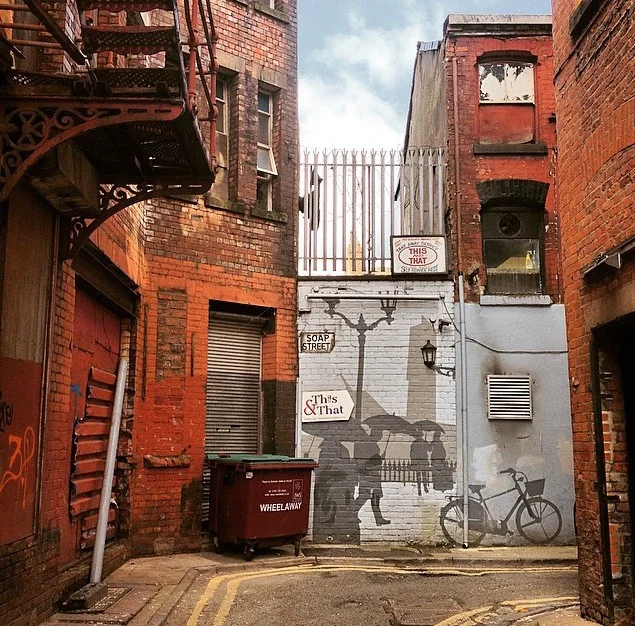
The Modern History of the Northern Quarter
By now we're back to where we began, in 1992, when the city council had been thinking about the knock on effect the shopping centre had had upon its surroundings, when they decided to try and revive the area, and when Liam Curtin came on board.
However much people think of the Northern Quarter as something that has been created by artists independently of any government or sponsorship, its origins were in part engineered or at least given a financial boost. This isn’t the same as a lack of autonomy however as the association was really quite free to experiment; even now the council steer clear of the area in many ways, and by doing so they almost nullify its existence - it's not covered, for example, in city centre living statistics, it's almost an administrative secret and its down to this that the area has so far managed to keep out any large chains, any Starbucks or Costas.
The real life model that the association had shown to the council and had won them over with was Temple Bar in Dublin but association members lament how the council didn’t continue to monitor and pay heed to the progress or pitfalls of Temple Bar- once the area became saturated with bars, stag parties followed, and there was little else left to do but to get drunk and party. What had made the area great had been forgotten or replaced. The Northern Quarter was never meant to replicate that, but it seems inevitable.
The association and Urbanistics had focused on the existing and the artistic communities and they had drawn up plans to retain and celebrate these people. They hoped to champion the market barrows on Church Street, but instead the council closed more of these down (whilst at the same time they held regular high-end craft markets for international sellers behind the fish market gates - gentrification much?). The association had submitted ideas for groundbreaking cultural initiatives such as an arts centre and cinema created especially with the disabled user in mind, and in essence the existing community was always at the forefront of their schemes. The members didn’t want to move anybody on from here, they wanted to help them grow, and even now they become at their most engaged and enthused when they hear of new community initiatives or campaigns in the area, such as those to boycott new car parks or to create new green space.
Although the association was put in place to create or commission sculptures around the area it was apparent that public art wasn’t going to tackle the problem of drug addicts, or homelessness, or the fact that the Arndale was still a behemoth with which to compete. There was an obvious short-sightedness on the council’s part back then but the association saw how they could use their position to leverage more out of the council in order to address these problems. In exchange for an art installation they would first plead for money to light the streets and make them feel a safer place to be, and this methodology was how it worked for a while - the streets being improved piecemeal in exchange for art.
Today much of the originally commissioned work remains, which Liam finds strange; a living gallery of ephemera that won't be moved on even when it has fallen apart.
The street art story finally begins on the Tib Street Trail, and in 1999.
Stay tuned for Part Two...